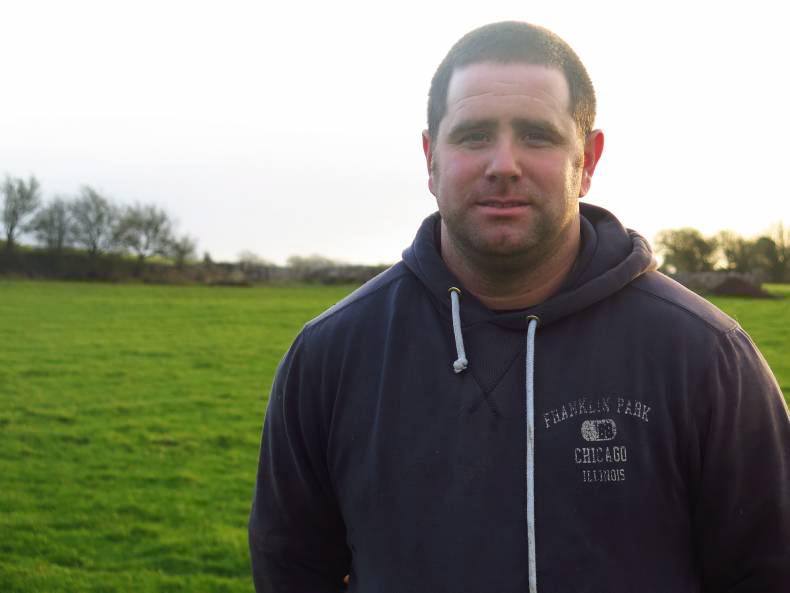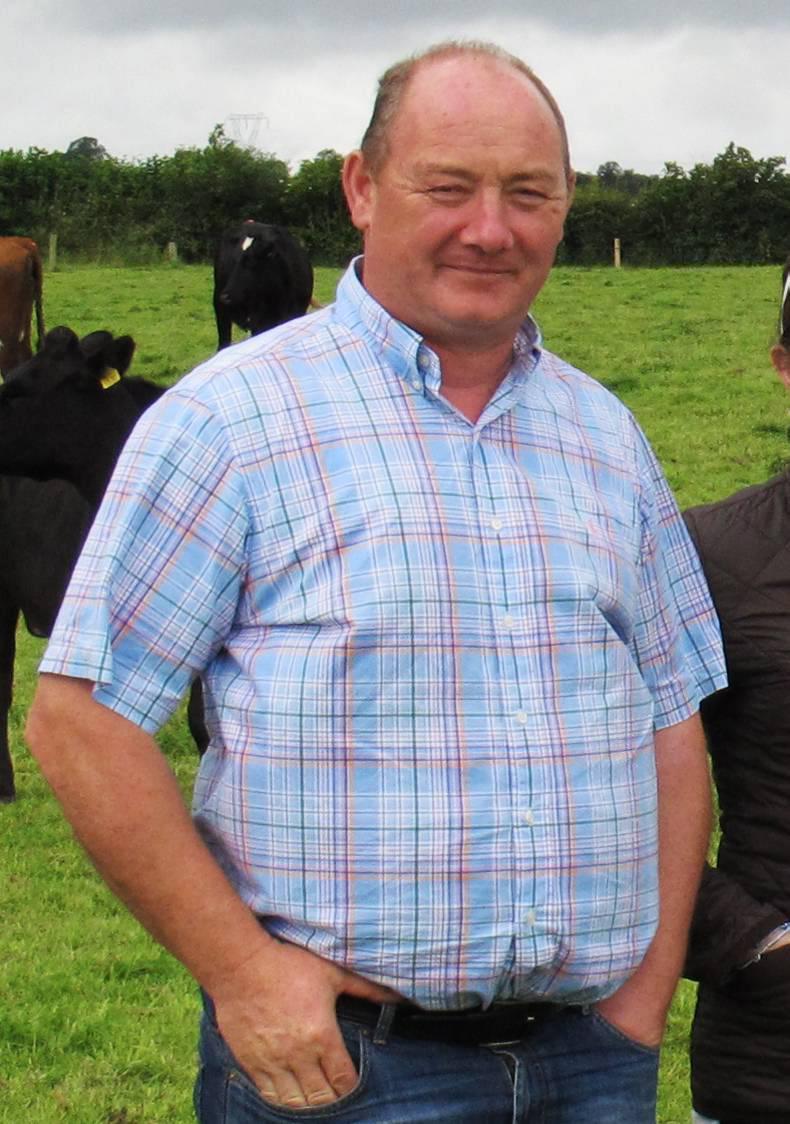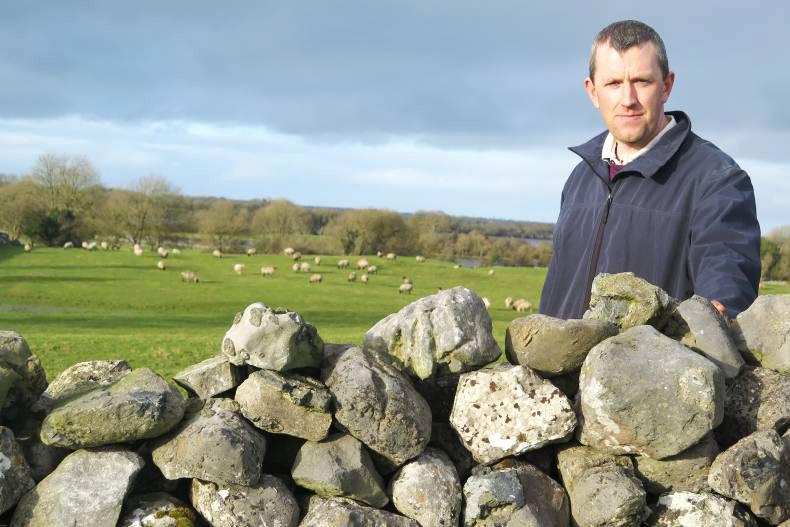Farmers in East Galway facing disruption of their farms by the proposed Galway-to-Dublin cycleway have welcomed the freezing of this section of the project. Minister Paschal Donohoe last week announced he was “pausing” development of the Galway and Roscommon sections. He and his officials in the Department of Transport, Tourism and Sport would concentrate instead on completing the section from Maynooth to Westmeath, he said.
The pause, he explained, was to allow time for all involved to reflect on the issues raised and to give consideration to developing a new route that works locally and has farmer support. He acknowledged that there are significant concerns in East Galway about the impact of the cycleway. But a Galway-to-Dublin cycleway remains a Government priority, he said.
His decision came after county council and transport officials visited farmers in the two counties to hear their views and submitted a report to the Minister. While the whole process has been underway since 2013, this was the first time landowners were consulted on a one-to-one basis.

Proposed route
The Galway-to-Dublin Cycleway is to be 280km long and run through counties Galway, Roscommon, Westmeath, Meath, Kildare and Dublin.
The 140km east of the Shannon are straightforward. The route – for the most part – runs along the towpaths of the Royal Canal and the disused Mullingar-to-Athlone railway. It generally does not run across farms and is not controversial. Some sections are already open, others are in planning stage. However, west of the Shannon, in counties Roscommon and Galway, there are few available stretches of canal or disused railway.
Therefore, in 2013/’14 a project team selected a corridor running the 145km between Athlone and Galway, within which an exact route was to be selected. This corridor crosses some land in public ownership but mostly privately-owned farmland. It ran through or along some 1,400 farms.
The key criteria in the selection of the route included landscape, local services and attractions, and connectivity. Farmers were not consulted. The Department of Transport, Tourism and Sport declared that compulsory purchase orders could be used to acquire land to complete the cycleway in counties Roscommon and Galway, with compensation paid.
A preferred route was then identified running from Galway city, through Oranmore, Clarinbridge, Craughwell, Loughrea, Kilreekil, Aughrin, Ballinsloe, and Shannonbrige arriving in Athlone. The route was presented to the public at a series of seven meetings in the two counties in October and November 2014.
Finally consultation
Following widespread objections, Minister Pascal Donohoe asked a project team to conduct one-to-one consultation with landowners. This took place between June and August 2015. For Co Galway the resulting report says:
An estimated 1,000 families own land along this section of the preferred route.A sample of 194 were consulted – approximately 20%.Farmers were asked if they would object to the cycleway crossing over their land.63% object.27% don’t object.Landowners were asked if they could show a preferred route over their farms.49 (25%) were willing to do so.Many of these were “objectors” willing to indicate a least worst option.Most often this was along a boundary with a neighbouring farm.Other examples were along road frontage or watercourses that already divided their land.The report states that for Co Roscommon, into which falls most of the Ballinasloe-to-Athlone section, the reaction was more positive. Officials canvassed 136 landowners, 32% of those who would be affected. Some 74% would accept the route corridor, 20% would object to it and 6% were undecided.
“When state owned lands are factored into the figures it seems that almost 90% of the emerging route had acceptance in this section.”
Sensible concerns
Farmers identified a wide range of concerns.
Most common was impact on the farm, including splitting the farm, loss of land, disruption of farm work, loss of farm income, higher insurance, risk of animal disease, animals breaking out.Farmers were concerned about a threat to their security, including burglaries, trespass, nuisance and loss of privacy.Some feared it would become more difficult for a son or daughter to obtain planning permission to build. a house on the home farmFarmers believed cyclists would be at risk from livestock and during work such as crop spraying, slurry spreading and silage making.Farmers welcome pause
Suckler and sheep farmer David Lane, based near Craughwell, this week welcomed the suspension of the cycleway but warns that the threat hasn’t gone away. “It could still go ahead. The Minister is committed to building a cycleway. The threat of CPO still stands. People are missing that.”
“He is on about using State land, but there is not enough State land between Galway and Athlone – so some farmers will have to be affected.”
“I don’t want to see the cycleway running across private farmland. That’s trying to make a tourist attraction out of a work place. A farm can be a dangerous place.”

East Galway dairy farmer Kevin Hannon welcomed the Minister’s decision. The preferred route could have passed through his land and affected him directly. “I use the land at the far side of the route to graze cows on up to 20 days each month. When the cows would be using that land I would have to open and close gates four times per day, over morning and evening.”
“My cows would stand around waiting for gates to be opened to let them out to graze. I expect I would have to clean dung off the cycleway every time the cows crossed it. I would probably have to install an underground tank there for washings.”
“But my biggest issue is over security. Farmhouses would be at greater risk of burglary and there would be more risk of cattle being stolen. You could walk cattle from any of my sheds and on along the cycleway to a waiting trailer.”
“But I would hope that with better consultation the cycleway could still go through Craughwell, for the betterment of the whole community.”

Dairy farmer Seamus Quigley would also be directly affected by the proposed route. It would have crossed four of the cow tracks on his farm at Ballyduggan, Loughrea where he milks 400 cows. “Officials from the NRA came out and they saw themselves that it can take 40 minutes for the cows to come in. Gates would have to be opened and closed, there would be dung on the cycleway. It would just not be practical.”
He is concerned about tourists straying off the cycleway on to farmland. “Also, if there was an accident, could an ambulance drive along the cycleway?”
Farmers still support a Galway-to-Dublin greenway, said chairman of Galway IFA Pat Murphy “The best option is to use more State-owned land. It’s there if you look for it.”
He also feels that parts of the old N6 road could be used, sectioned off for cyclists, as is done elsewhere in the country. “Farmers were not consulted, were taken for granted and were threatened with CPO,” he said. “A better approach is needed now.”
Farmers in East Galway facing disruption of their farms by the proposed Galway-to-Dublin cycleway have welcomed the freezing of this section of the project. Minister Paschal Donohoe last week announced he was “pausing” development of the Galway and Roscommon sections. He and his officials in the Department of Transport, Tourism and Sport would concentrate instead on completing the section from Maynooth to Westmeath, he said.
The pause, he explained, was to allow time for all involved to reflect on the issues raised and to give consideration to developing a new route that works locally and has farmer support. He acknowledged that there are significant concerns in East Galway about the impact of the cycleway. But a Galway-to-Dublin cycleway remains a Government priority, he said.
His decision came after county council and transport officials visited farmers in the two counties to hear their views and submitted a report to the Minister. While the whole process has been underway since 2013, this was the first time landowners were consulted on a one-to-one basis.

Proposed route
The Galway-to-Dublin Cycleway is to be 280km long and run through counties Galway, Roscommon, Westmeath, Meath, Kildare and Dublin.
The 140km east of the Shannon are straightforward. The route – for the most part – runs along the towpaths of the Royal Canal and the disused Mullingar-to-Athlone railway. It generally does not run across farms and is not controversial. Some sections are already open, others are in planning stage. However, west of the Shannon, in counties Roscommon and Galway, there are few available stretches of canal or disused railway.
Therefore, in 2013/’14 a project team selected a corridor running the 145km between Athlone and Galway, within which an exact route was to be selected. This corridor crosses some land in public ownership but mostly privately-owned farmland. It ran through or along some 1,400 farms.
The key criteria in the selection of the route included landscape, local services and attractions, and connectivity. Farmers were not consulted. The Department of Transport, Tourism and Sport declared that compulsory purchase orders could be used to acquire land to complete the cycleway in counties Roscommon and Galway, with compensation paid.
A preferred route was then identified running from Galway city, through Oranmore, Clarinbridge, Craughwell, Loughrea, Kilreekil, Aughrin, Ballinsloe, and Shannonbrige arriving in Athlone. The route was presented to the public at a series of seven meetings in the two counties in October and November 2014.
Finally consultation
Following widespread objections, Minister Pascal Donohoe asked a project team to conduct one-to-one consultation with landowners. This took place between June and August 2015. For Co Galway the resulting report says:
An estimated 1,000 families own land along this section of the preferred route.A sample of 194 were consulted – approximately 20%.Farmers were asked if they would object to the cycleway crossing over their land.63% object.27% don’t object.Landowners were asked if they could show a preferred route over their farms.49 (25%) were willing to do so.Many of these were “objectors” willing to indicate a least worst option.Most often this was along a boundary with a neighbouring farm.Other examples were along road frontage or watercourses that already divided their land.The report states that for Co Roscommon, into which falls most of the Ballinasloe-to-Athlone section, the reaction was more positive. Officials canvassed 136 landowners, 32% of those who would be affected. Some 74% would accept the route corridor, 20% would object to it and 6% were undecided.
“When state owned lands are factored into the figures it seems that almost 90% of the emerging route had acceptance in this section.”
Sensible concerns
Farmers identified a wide range of concerns.
Most common was impact on the farm, including splitting the farm, loss of land, disruption of farm work, loss of farm income, higher insurance, risk of animal disease, animals breaking out.Farmers were concerned about a threat to their security, including burglaries, trespass, nuisance and loss of privacy.Some feared it would become more difficult for a son or daughter to obtain planning permission to build. a house on the home farmFarmers believed cyclists would be at risk from livestock and during work such as crop spraying, slurry spreading and silage making.Farmers welcome pause
Suckler and sheep farmer David Lane, based near Craughwell, this week welcomed the suspension of the cycleway but warns that the threat hasn’t gone away. “It could still go ahead. The Minister is committed to building a cycleway. The threat of CPO still stands. People are missing that.”
“He is on about using State land, but there is not enough State land between Galway and Athlone – so some farmers will have to be affected.”
“I don’t want to see the cycleway running across private farmland. That’s trying to make a tourist attraction out of a work place. A farm can be a dangerous place.”

East Galway dairy farmer Kevin Hannon welcomed the Minister’s decision. The preferred route could have passed through his land and affected him directly. “I use the land at the far side of the route to graze cows on up to 20 days each month. When the cows would be using that land I would have to open and close gates four times per day, over morning and evening.”
“My cows would stand around waiting for gates to be opened to let them out to graze. I expect I would have to clean dung off the cycleway every time the cows crossed it. I would probably have to install an underground tank there for washings.”
“But my biggest issue is over security. Farmhouses would be at greater risk of burglary and there would be more risk of cattle being stolen. You could walk cattle from any of my sheds and on along the cycleway to a waiting trailer.”
“But I would hope that with better consultation the cycleway could still go through Craughwell, for the betterment of the whole community.”

Dairy farmer Seamus Quigley would also be directly affected by the proposed route. It would have crossed four of the cow tracks on his farm at Ballyduggan, Loughrea where he milks 400 cows. “Officials from the NRA came out and they saw themselves that it can take 40 minutes for the cows to come in. Gates would have to be opened and closed, there would be dung on the cycleway. It would just not be practical.”
He is concerned about tourists straying off the cycleway on to farmland. “Also, if there was an accident, could an ambulance drive along the cycleway?”
Farmers still support a Galway-to-Dublin greenway, said chairman of Galway IFA Pat Murphy “The best option is to use more State-owned land. It’s there if you look for it.”
He also feels that parts of the old N6 road could be used, sectioned off for cyclists, as is done elsewhere in the country. “Farmers were not consulted, were taken for granted and were threatened with CPO,” he said. “A better approach is needed now.”











SHARING OPTIONS